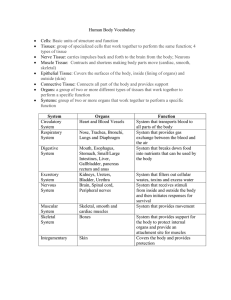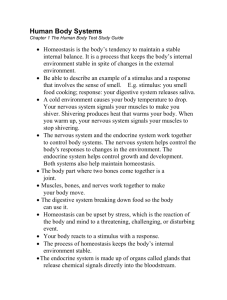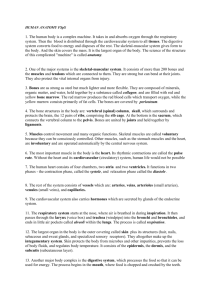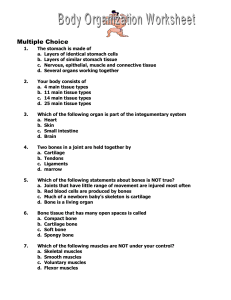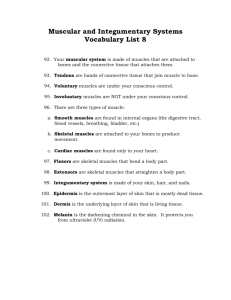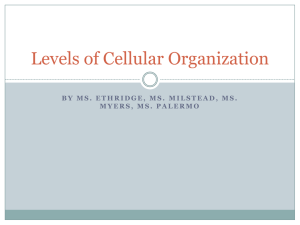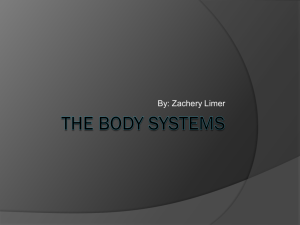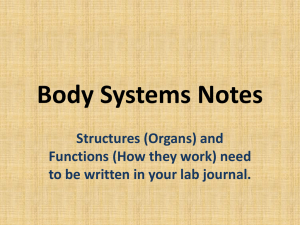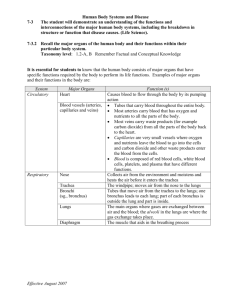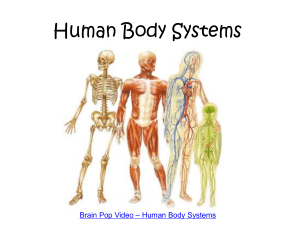Comparison Frame: The Body Systems
advertisement
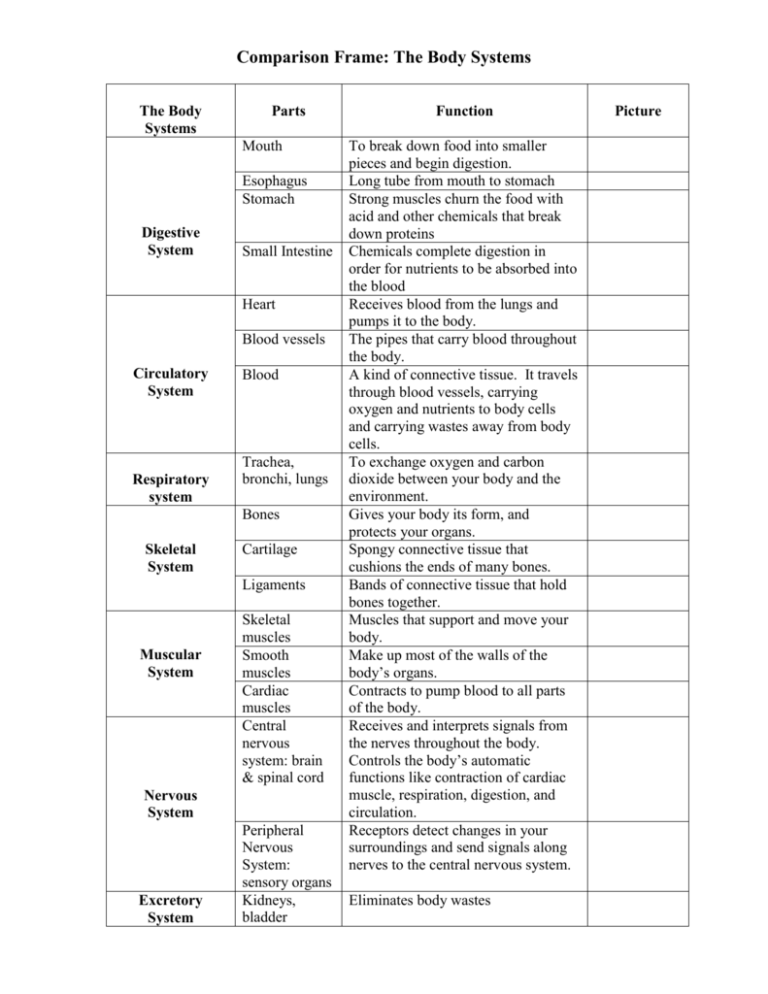
Comparison Frame: The Body Systems The Body Systems Parts Mouth Esophagus Stomach Digestive System Small Intestine Heart Blood vessels Circulatory System Respiratory system Blood Trachea, bronchi, lungs Bones Skeletal System Cartilage Ligaments Muscular System Skeletal muscles Smooth muscles Cardiac muscles Central nervous system: brain & spinal cord Nervous System Excretory System Peripheral Nervous System: sensory organs Kidneys, bladder Function To break down food into smaller pieces and begin digestion. Long tube from mouth to stomach Strong muscles churn the food with acid and other chemicals that break down proteins Chemicals complete digestion in order for nutrients to be absorbed into the blood Receives blood from the lungs and pumps it to the body. The pipes that carry blood throughout the body. A kind of connective tissue. It travels through blood vessels, carrying oxygen and nutrients to body cells and carrying wastes away from body cells. To exchange oxygen and carbon dioxide between your body and the environment. Gives your body its form, and protects your organs. Spongy connective tissue that cushions the ends of many bones. Bands of connective tissue that hold bones together. Muscles that support and move your body. Make up most of the walls of the body’s organs. Contracts to pump blood to all parts of the body. Receives and interprets signals from the nerves throughout the body. Controls the body’s automatic functions like contraction of cardiac muscle, respiration, digestion, and circulation. Receptors detect changes in your surroundings and send signals along nerves to the central nervous system. Eliminates body wastes Picture
